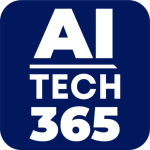Large language models (LLMs) have revolutionized various industries in recent times by enhancing efficiency and productivity through advanced natural language processing capabilities. LLMs are becoming essential tools in today’s digital landscape. So, what is LLM used for? Applications of LLM include automating repetitive tasks, streamlining communication, and providing insightful data analysis, making them invaluable across fields such as healthcare, finance, education, and customer service. By understanding and generating human-like text, LLMs facilitate faster decision-making and improve user experiences.
As organizations increasingly adopt these technologies, the potential for innovation and optimization grows, paving the way for a future where LLMs transform workflows and drive success across diverse sectors. This article will talk about LLMs, their architecture, and a detailed explanation of the LLM model architecture. Let’s dig in!
What is LLM?
A large language model, an advanced artificial intelligence system, which is made to learn and generate human-like language. Large language models serve as machine learning models that use algorithms to process natural language. These models are well-trained to properly identify patterns and relationships within the language. LLMs can handle a variety of language tasks, which include language translation, chatbot interactions, and more.
Applications of LLM
As technology in today’s world continues to improve, applications of LLM are getting more diverse and remarkable. These applications include writing essays, coding, having general conversations, and creating poetry. LLM’s underlying neural networks enable them to process and generate real efficiently, making them invaluable tools across industries.
Applications of LLM in real life:
- Content Generation – One of the main applications of LLM is generating good content. LLMs automatically create texts for articles, blogs, video scripts, or social media updates. Content creators use LLM on a large scale to streamline their content, and save the time and effort that goes into the writing. ChatGPT and Claude are two AI-powered apps that use LLM.
- Translation with Language Models- Translating written texts is another crucial application of LLM. Users can enter any given text in the chatbot asking it to translate it to another language, and it will automatically start translating the text. LLMs like GPT-4 give tough competition to applications like Google Translate.
- Audio Data Analysis– LLMs are changing our outlook of handling audio data, by turning hours together of recording into insights that will be helpful to us. LLM extracts key points and answers necessary queries about meetings, videos, or podcasts. In the realm of data analysis, LLMs can perform sentiment analysis on customer feedback, helping businesses understand consumer emotions and preferences. Corporates use audio data analysis to streamline their decision-making, based on the meeting insights. By doing this, they get a clear view of the customer’s concerns and their preferences.
- Virtual Assistants– Virtual assistants by LLMs completely transform customer support by providing instant support and automating daily tasks. One of the most common applications of LLM is handling queries of customers, and offering real-time support. Virtual assistants also understand complex queries and provide customers with personalized support.
- Zero-Shot Learning Capability: Research indicates that LLMs like GPT-3 can achieve up to 80% accuracy in zero-shot learning tasks across various benchmarks, showcasing their ability to generalize knowledge without task-specific training. This represents a significant advancement in the efficiency and adaptability of LLMs.
Also Read: A Holistic Guide To AI Training Data
Major Applications of LLM in Market Research
Large language models have the potential to transform market research significantly. They can accelerate processes, improve accuracy, and uncover trends that human researchers may overlook.
Here are some possible applications of LLM in market research:
- Summarization of data– LLMs can help summarize, organize, and prioritize responses, which makes it easier for researchers to make narratives for specific clients. LLMs can instantly organize data and create headlines based on tables, charts, and summaries.
- Intelligent Interviewing– LLMs use conversational AI to standardize the process of making questionnaires. Conversational AI responds to the previous answers and only then prepares the next questionnaire.
- Analyzing customer feedback– LLM conducts a proper analysis of feedback from customers and reviews them giving businesses a clear idea about the opinions of their customers and their preferences and complaints if any. This ensures product enhancement, ensuring that customers’ requirements are met.
- Competitive Analysis– AI and LLM both use competitive analysis to analyze their competitor’s presence in the market, reviews of their customers, and their social media activities. This is crucial for maintaining a mark in the market and providing services efficiently.
How Content is Generated Through LLMs
LLMs are used for creating various types of content. This content can be categorized from completely creative works that require little direction to the extraction of specific information that demands a significant amount of guidance.
LLM Content Generation Patterns
- Creative Text Composition– It includes open-ended text generation, where an LLM is given minimal guidance or constraints that allow it to unleash its creativity based on the prompt. This can be instrumental for tasks requiring more open-ended content, such as blog posts, imaginative storytelling, or creative marketing content. LLMs are trained on a huge volume of data with content cutting across all possible categories like academia, web, news, research, etc. They facilitate content creation by offering unorthodox ideas or angles.
- Information Retrieval– Traditional search engines are designed to retrieve relevant information based on particular queries and mainly rely on bots to determine their relevance. Here the applications of LLM facilitate understanding neutral languages and generating personalized responses, highlighting the limitations of traditional search engines. LLMs can accurately shorten the long textual data, which is relevant and makes sense to the readers. LLMs lay out more accurate results, which can be later explored by having an actual conversation with the model.
Various Types of LLMs
- Autoregressive models– This model of LLM generates one token for a text that is entirely based on the previously released token. It predicts the next word that could fit into any specific sentence. It tends to be on the expensive side and can sometimes provide irrelevant solutions.
- Multilingual Models– These models can collect data from texts and convert it into several languages, which is crucial for tasks that require cross-lingual information from multi-lingual chatbots. They are mainly known for transferring knowledge from one language to another.
- Proprietary Models– These LLMs are handled by private organizations and are only available through properly issued licenses or subscriptions. Data cannot be shared publicly and these models are mostly restricted. These models are specifically made for industries or fields where a certain kind of knowledge is necessary. Examples of these models include:
- Finance– Assisting in the analysis of financial reports, understanding economic trends, and supporting risk management efforts.
- Healthcare– These models are trained on medical literature mainly for treatment recommendations and proper medical research.
Difference Between GPT and LLM
GPT (Generative Pre-Trained Transformer) models are built for generating text, completing sentences, and handling various language-related tasks. LLMs (Large Language Models) represent a broader category that includes different architectures like Transformers, RNNs (Recurrent Neural Networks), and CNNs (Convolutional Neural Networks).
LLMs are designed to be adaptable, with the specific goals of the model. AI models focus on language tasks,whereas LLMs cover a bigger line-up of applications,that include data analytics and many more tasks. A recent study demonstrated that an LLM improved its performance on the GSM8K benchmark from 74.2% to 82.1%, marking an increase of 7.9%.
Benefits of Combining LLMs and Data Analytics
By enhancing current business analytics and applications of LLM, teams from various functions can obtain answers to questions that once needed the expertise of at least one business analyst or data scientist. Advantages of using LLMs for data analytics are:
Reduced learning curve- With LLMs, complex SQL queries or lengthy training sessions are not needed for new team members. Teams can execute analytics commands using simple text prompts.
- Personalized reports– LLMs can analyze already existing data to generate precise summaries, offer segmented insights or suggest steps to be taken next.
- Innovative insights– When paired with machine learning techniques for handling structured data, LLMs can discover hidden patterns, emerging trends, and subtle correlations within the data.
- Cost efficiency– You can utilize more datasets without incurring additional costs for expensive software licenses or hiring specialists to create yet another analytics dashboard.
Conclusion
The diverse applications of LLMs are aimed at enhancing efficiency by automating tasks, improving communication, and facilitating data analysis. From streamlining customer service through chatbots to aiding researchers in synthesizing information, LLMs offer versatile solutions that save time and resources. Their ability to understand and generate human-like text fosters collaboration and innovation in industries such as healthcare, finance, and education. As these technologies continue to evolve, their potential to transform workflows and drive productivity will only increase, making them indispensable tools in the modern landscape of work and creativity.

